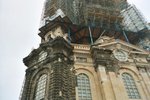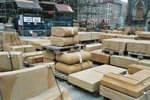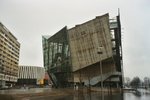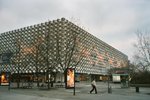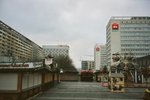Hi Erich,
>in regards to the Frauenkirche aren't the dark stone bricks the originals ?
Yes. It's sandstone, and I believe the new stones will eventually grow as dark as the historic stones. No idea how long this will take, though!
Here two pictures from 2002 - you can see the light colour of the new stones (temporarily stored in front of the Frauenkirche) and the contrast to the old masonry already included in the building.
Regards,
Henning (HoHun)
>in regards to the Frauenkirche aren't the dark stone bricks the originals ?
Yes. It's sandstone, and I believe the new stones will eventually grow as dark as the historic stones. No idea how long this will take, though!
Here two pictures from 2002 - you can see the light colour of the new stones (temporarily stored in front of the Frauenkirche) and the contrast to the old masonry already included in the building.
Regards,
Henning (HoHun)

